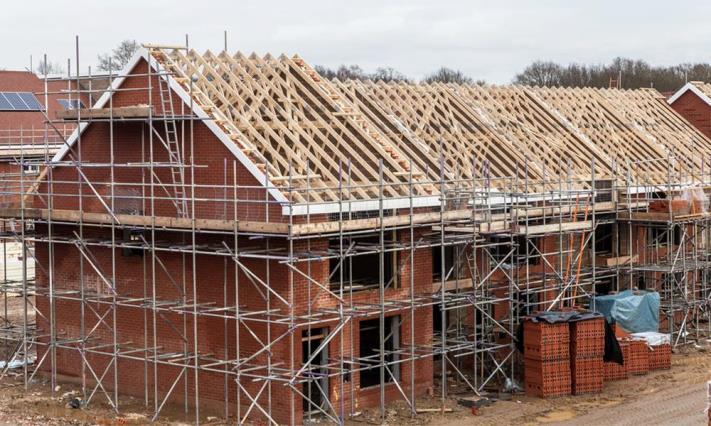Theresa May: 25,000 New council homes. But what does it mean?

You might have seen the news recently. Theresa May’s performance at the conservative party conference had an air of comedy to it. A set of unfortunate circumstances, some manufactured, some a victim of fate, that left her fighting to keep her job. Not a great day for the conservatives or politics in the UK, in general. But perhaps it was a good day for the building industry?
The big statement in her speech was her commitment to invest in social housing. Backed by the conservatives, there is a plan in place to add a further 25,000 council homes, starting as soon as 2019.
The UK is desperate for low-cost housing in general and especially council homes, so that has been a welcome boost to the working class of the UK, but equally, in a tough economic climate, the return of social housing projects is a welcome boost to the building industry too.
Many will remain cautious. Since 2011 we’ve witnessed the selling off of government land, predominantly by the Ministry of defence and Ministry of Health. Often it was sold under the guise of “low-cost housing”, but we all know, in many cases, the ministries were feeling the pinch from budget cuts, and it was just a way to balance the books.
Research has shown, that in many cases, the land was used for almost everything but low-cost housing. Just because, for developers, it offers the lower profit margins and as the departments selling the land didn’t have the right experience and legal framework in place to insist that the land was used for low-cost housing. Developers did what they wanted.
Some developers built hotels and health clubs, serviced apartments and executive housing. Others simply bought the land, applied and were awarded planning permission, and immediately put the land back for sale, with planning permission, at a higher price.
It won’t come as a surprise to many that local government and central government don’t speak to each other. However, with this new statement and with the government eager to “get a win” the future is bright for the building community.
Since the 1960’s the building community has witnessed the decrease of public sector housing. The result is that now the UK is suffering from a deficit of affordable housing. Historically, local governments were the largest client of the housing industry. But, we’ve seen a steady decrease since the 1980’s. It caused some developers and contractors to have to change their business model completely.
The withdrawal of public sector housing has left the British public with a deficit of affordable homes. It’s also been a hurdle the building community has had to overcome. Historically, local governments were one of the biggest clients in the UK building industry, but this has been winding down since the 1980s leaving thousands of builders and developers in limbo.
However, this statement from the PM is almost a sign that central government are catching up to local initiatives. According to Joe Bond of Kenzie Group: “ over 35% of local councils have started to develop their own social housing directly or have set up partnerships, or joint ventures do so”.
So, it looks like the conservative government are jumping on board. All signs are that the trend is all set to continue which is great news for the building community and families looking for low-cost housing alike. However, for business who haven’t experience working for local governments, you need understand the nature of the beast.
It would be prudent to listen to Joe Bond, Managing director of Kenzie Group’s warning. “When working with local governments, tenders are often won by the lowest bidder. You have to make sure you have your numbers right because profit margins are tight. Local governments make terrible clients. Ensure you contract include provision for delays and get specific with formats for issuing delays. Don’t give them any wriggle room”.
Right now, the building industry has shifted away from building low-cost housing. Only 20% of the homes being built are for low-cost housing. Developers have tighter profit margins on such houses. In total, only 6% of those homes are social housing. But if the conservatives follow through on their promise to build 25,000 new homes in 2 years, the building landscape is going to witness a significant change.
As it stands, experts are unsure how the building industry will react to 25,000 more homes to be built. Currently, they build 40,000 new homes each year, so 25,000 over a couple of years represents a significant increase in output. Whether it will mean a shift in what gets built or the industry will expand to build more homes, most likely a little of both, only time will tell.
The immediate fallout from her speech was focused on the delivery, not the substance. However, calls for her head put the whole speech in jeopardy. A change in leadership would likely mean another general election. A labour party taking power would not necessarily mean the plan would be pursued. However, it seems less likely now that Theresa May will not face a leadership battle and the plan for 25,000 new social housing looks safe. For now.



